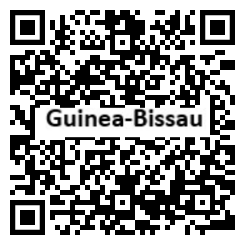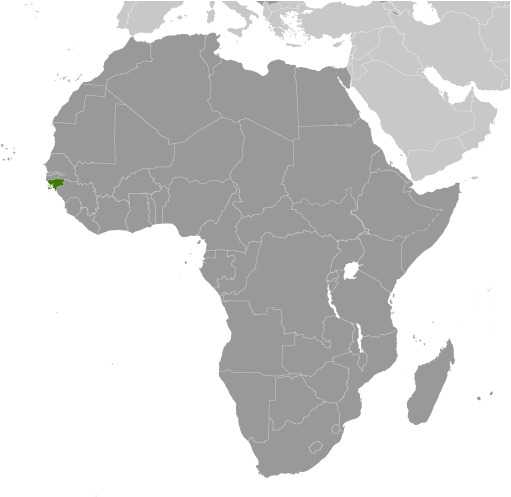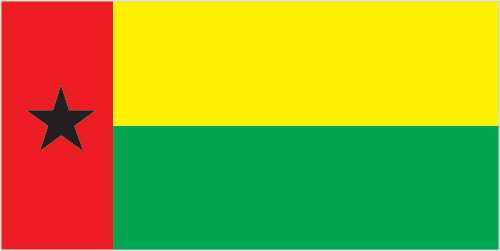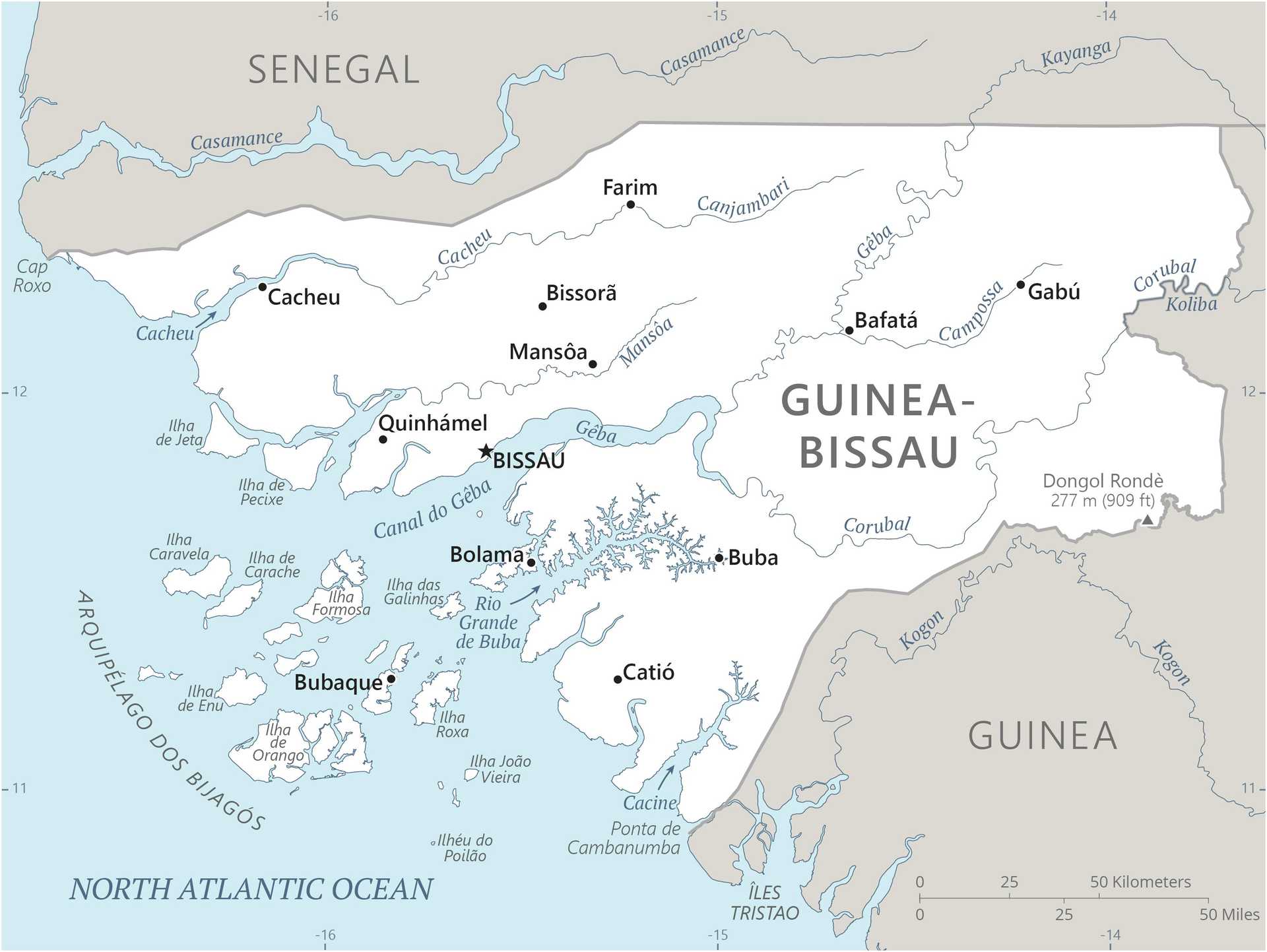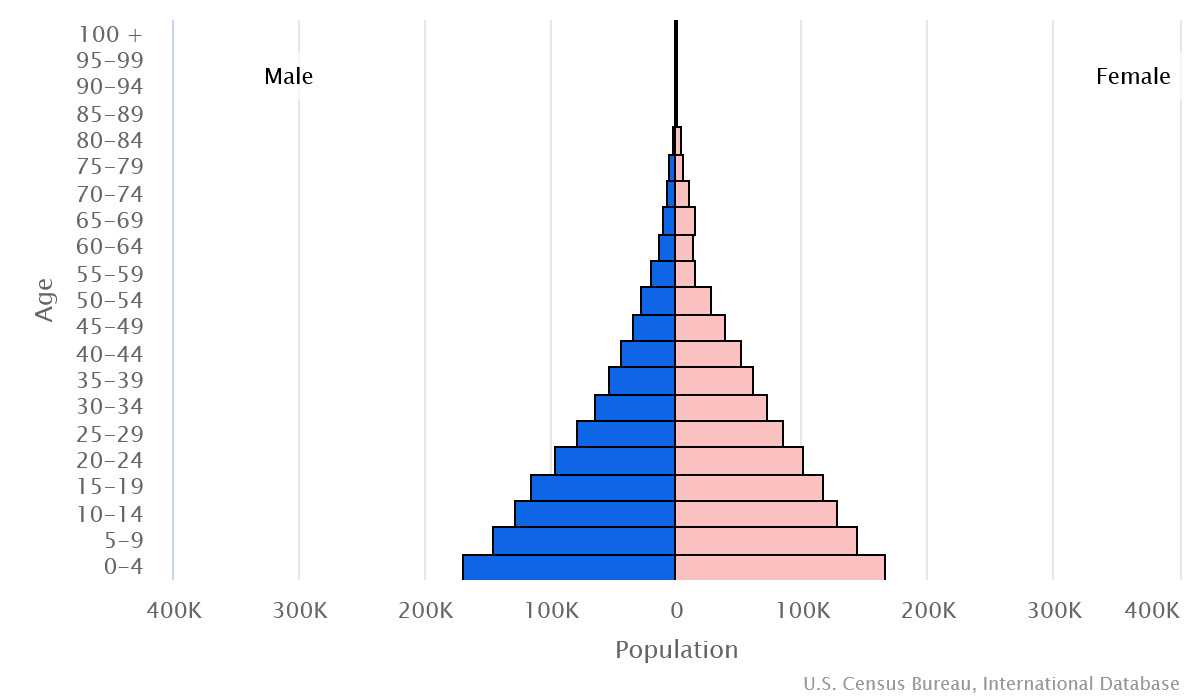Introduction
Background
Since independence from Portugal in 1974, Guinea-Bissau has experienced considerable political and military upheaval. Guinea-Bissau’s history of political instability, a civil war, and several coups (the latest in 2012) have resulted in a fragile state with a weak economy, high unemployment, rampant corruption, and widespread poverty.
Geography
Area
total: 36,125 sq km
land: 28,120 sq km
water: 8,005 sq km
Climate
tropical; generally hot and humid; monsoonal-type rainy season (June to November) with southwesterly winds; dry season (December to May) with northeasterly harmattan winds
Natural resources
fish, timber, phosphates, bauxite, clay, granite, limestone, unexploited deposits of petroleum
People and Society
Population
total: 2,132,325
male: 1,042,910
female: 1,089,415 (2024 est.)
Ethnic groups
Balanta 30%, Fulani 30%, Manjaco 14%, Mandinga 13%, Papel 7%, unspecified smaller ethnic groups 6% (2015 est.)
Languages
Portuguese-based Creole, Portuguese (official; largely used as a second or third language), Pular (a Fula language), Mandingo
Religions
Muslim 46.1%, folk religions 30.6%, Christian 18.9%, other or unaffiliated 4.4% (2020 est.)
Population growth rate
2.54% (2024 est.)
Government
Government type
semi-presidential republic
Capital
name: Bissau
Executive branch
chief of state: President Umaro Sissoco EMBALO (since 27 February 2020); note - President EMBALO was declared winner of the 29 December 2019 runoff presidential election by the electoral commission; in late February 2020, EMBALO inaugurated himself with only military leadership present, even though the Supreme Court of Justice had yet to rule on an electoral litigation appeal lodged by his political rival Domingos Simoes PEREIRA
head of government: Prime Minister Rui Duarte DE BARROS (since 27 December 2023); note - on 4 December 2023 the president dissolved the parliament
Legislative branch
description: unicameral National People's Assembly or Assembleia Nacional Popular (102 seats; 100 members directly elected in 27 multi-seat constituencies by closed party-list proportional representation vote and 2 elected in single-seat constituencies for citizens living abroad (Africa 1, Europe 1); all members serve 4-year terms)
Economy
Economic overview
extremely poor West African economy; ethnically diverse labor force; increasing government expenditures; slight inflation due to food supply disruptions; major cashew exporter; systemic banking instabilities and corruption; vulnerable to oil price shocks
Real GDP (purchasing power parity)
$3.906 billion (2022 est.)
$3.774 billion (2021 est.)
$3.636 billion (2020 est.)
Real GDP per capita
$1,900 (2022 est.)
$1,800 (2021 est.)
$1,800 (2020 est.)
Agricultural products
rice, groundnuts, cashews, root vegetables, oil palm fruit, plantains, cassava, vegetables, sweet potatoes, coconuts (2022)
Industries
agricultural products processing, beer, soft drinks
Exports
$334.904 million (2021 est.)
$232.536 million (2020 est.)
$291.805 million (2019 est.)
Exports - partners
India 92%, Cote d'Ivoire 2%, Togo 2%, Netherlands 1%, South Korea 1% (2022)
Exports - commodities
coconuts/Brazil nuts/cashews, fish, fish oil, palm oil, dried fruits (2022)
Imports
$518.162 million (2021 est.)
$439.386 million (2020 est.)
$502.204 million (2019 est.)
Imports - partners
Portugal 34%, Senegal 22%, China 14%, Netherlands 6%, Spain 3% (2022)
Imports - commodities
refined petroleum, steel, rice, flavored water, beer (2022)
Exchange rates
Communaute Financiere Africaine francs (XOF) per US dollar -
Exchange rates:
623.76 (2022 est.)
554.531 (2021 est.)
575.586 (2020 est.)
585.911 (2019 est.)
555.446 (2018 est.)
Page last updated: Wednesday, May 15, 2024
